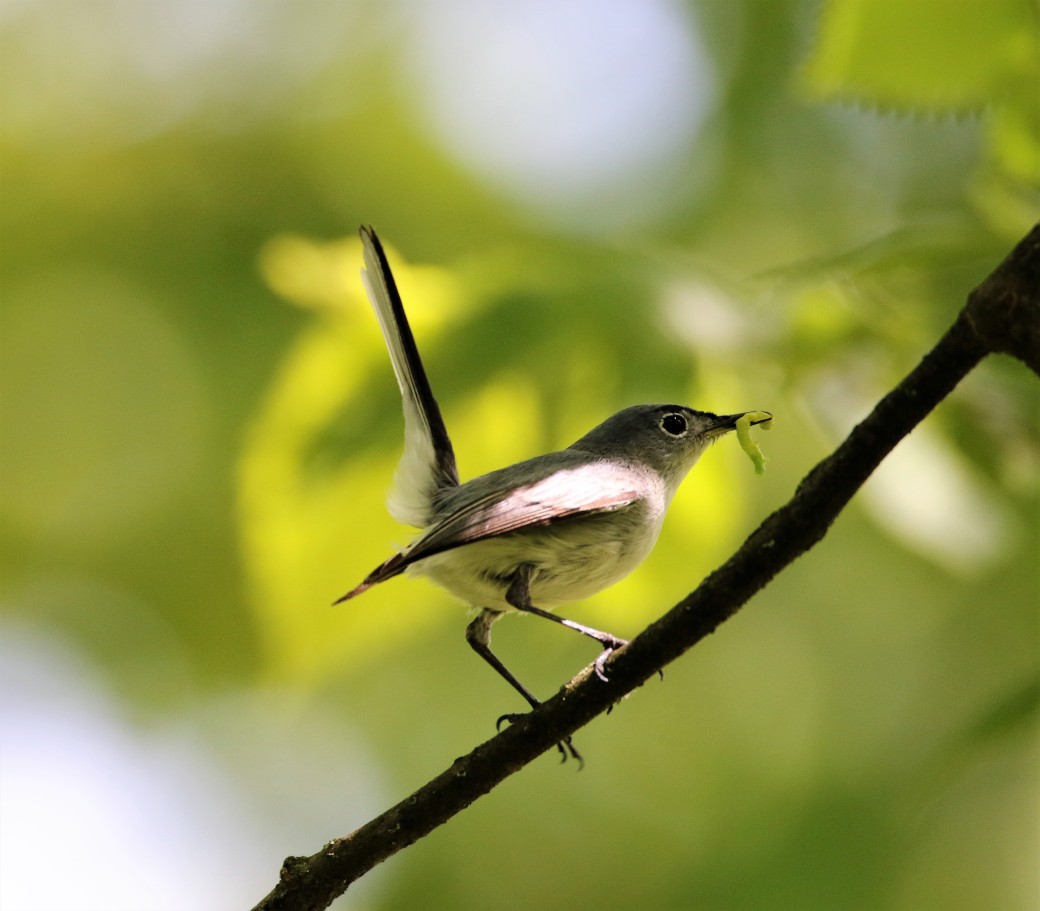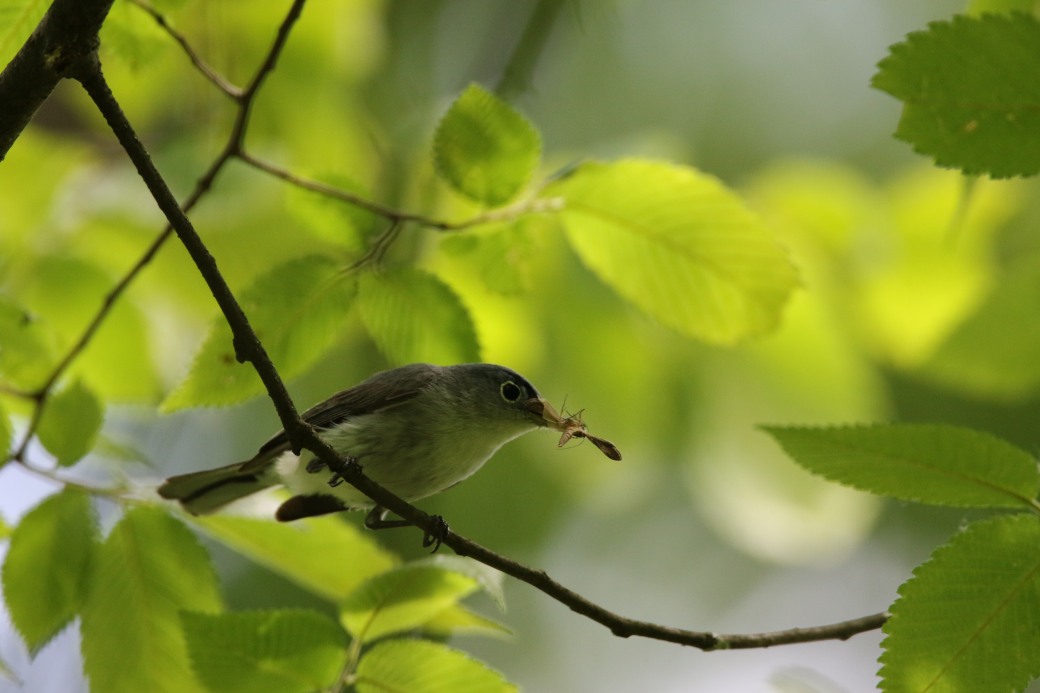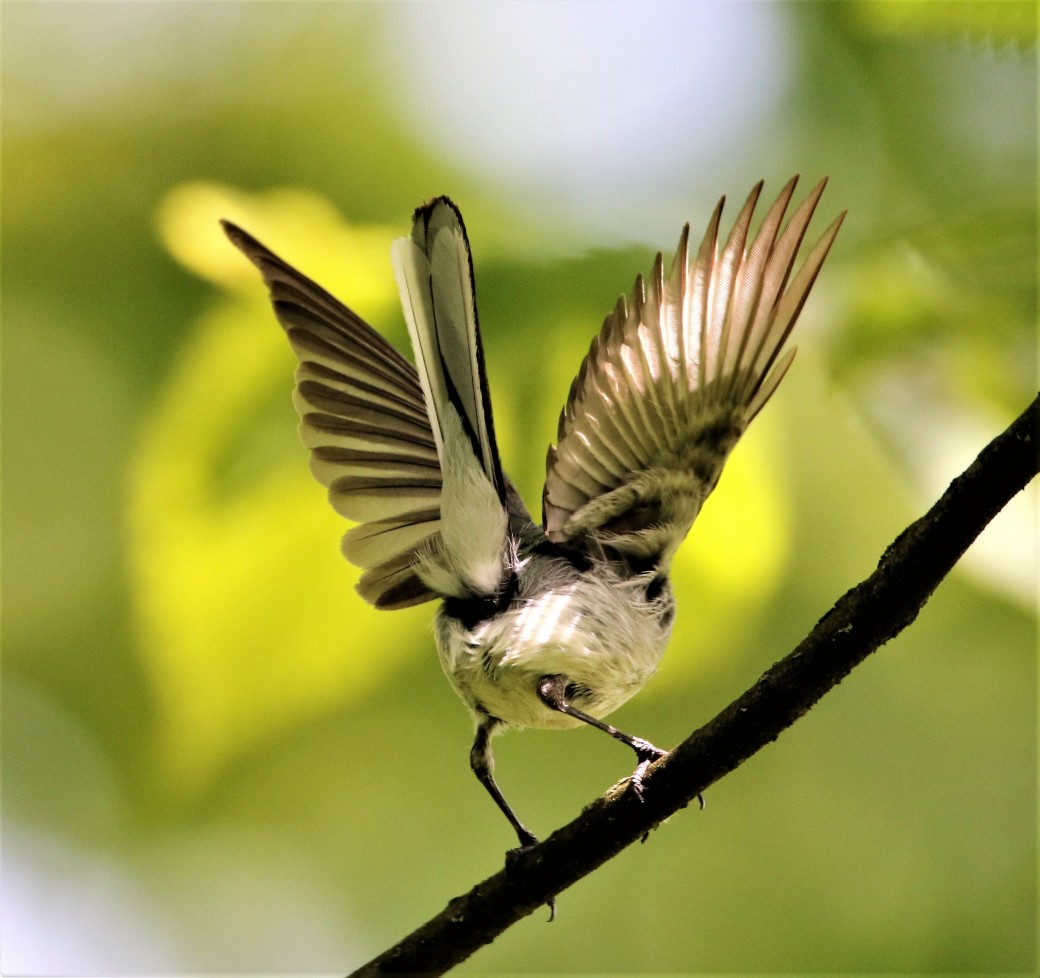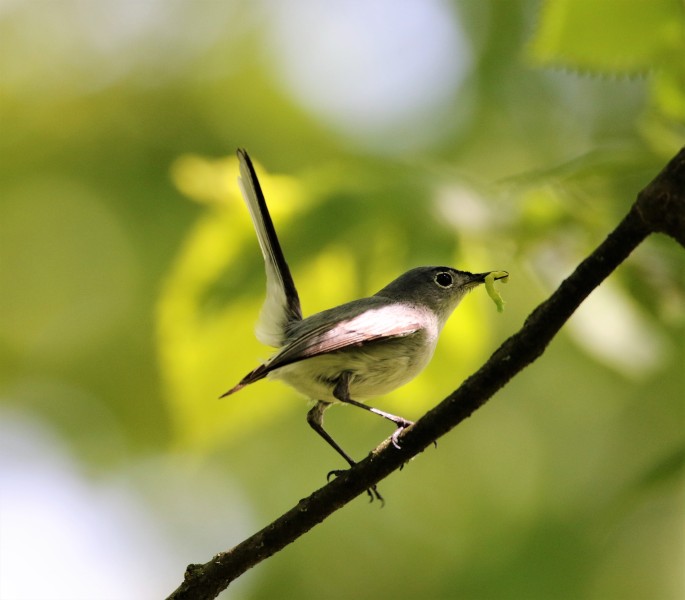
The tiny blue-gray gnat-catcher landed on the branch above me. Such a small bird I thought, just a little bigger than a humming bird. It worked its way up in the tree, its tail flitting as it went. The small caterpillar in its beak must be for young, I thought. Within moments the tiny bird sang a note of greeting, and I saw the nest with 3 young chicks poking heads toward the incoming meal.

For the next hour I stood somewhat out of sight and watched as 1st one parent, then another would bring back some small insect for the hungry mouths. Each time the parent would land below the nest, check for predators in the area, kind of hop from branch to branch in a upward spiral around an adjacent tree before softly singing a note of greeting to its young just before arrival. The chicks would tweet their hungry greetings in return, the meal would be offered, and the parent would spiral back down one of several adjacent trees singing to its young a series of 4 notes which soon sounded to me like “I’ll be back soon” Sometimes both parents would arrive back simultaneously, and one would wait on the other to carry out its duties and sing its four note farewell, before it too would go through the routine. I believe, even at this early age, the parents are teaching their young the sound of their voice.

It took the parents, working together almost two weeks to build 3″ nest. Using spider web they wove layers of progressively finer materials together, finishing with the inner cup measuring just 1-1/2″. Cleverly disguised with bits of liken and bark, the nest most resembles a tree knot. The eggs hatch in 11-15 days, and for 10 -15 days the parents will spend their entire daylight hours bringing their young food. They work non-stop.

Crows, squirrels, snakes and other predators search out the gnat-catcher’s nests, so the parents must be cautious not to reveal the nest’s location. While I was watching, a murder of crows flew overhead. Two individuals slowed to a hover over the woods – obviously looking for a meal.
With luck, in about two weeks the baby will be flying on their own., and next year they will return to continue the cycle.
How a bird can even build a nest, let alone one just like every other Blue-Gray gnat-catcher is an amazing thing. That the parent knows to sit on the eggs…and that they somehow know to work non-stop to feed their young. We call this instinct…seems like there is so much going on here that it should require more than one word.




